Results 2,431 to 2,440 of 12094
Thread: Anandtech News
-
12-13-12, 10:30 AM #2431
Anandtech: Broadcom's pre-CES Sneak Peek: BCM 43341 NFC Combo Chip and More..
We were at Broadcom's press event in San Francisco on Tuesday, where they outlined their vision for the trends in the next few years. Covered aspects included location technologies, Wi-Fi display, 5G Wi-Fi, NFC, connected automotive technologies and enterprise BYOD (Bring Your Own Device) issues. Rather than just presenting details from the press releases, we dug a little bit into what Broadcom thought about related competing and complementary technologies. In this piece, we will be taking a look at Broadcom's thoughts on the technology trends and our analysis of the same.
Location Technologies
Broadcom was bullish on location technologies which can enable creation of contextually aware platforms. These enable ad-targeting (for example, available sale or discount offers near the user's current location), automatic traffic advisory notes and other similar applications.
Broadcom indicated that they are well positioned to provide location technologies at various levels of 'accuracy' including cellular station identification, GPS, Wi-Fi, NFC, BLE (Bluetooth Low Energy) and MEMS. MEMS might appear to be out-of-place in the list, but it supplies essential information related to directionality / orientation.
These technologies make it necessary to have multiple antennae in the device. Wi-Fi operates in 2.4 GHz and 5 GHz, BLE in 2.4 GHz and NFC in 13.5 MHz. Cellphone reception and GPS signals require completely different frequencies too. Designing a system with a smartphone form factor and antennae for so many different applications is also a challenge in addition to the silicon requirements.
Wi-Fi Display
Intel's Wi-Di was one of the earliest commercially well-adopted wireless display technology which involved encoding the frame buffer contents and transmitting it over a ad-hoc Wi-Fi connection. While the initial versions utilized MPEG-2 encoding, the rise of Full HD requirements signalled the move to H.264. Currently, all wireless display technologies using the above method utilize H.264 encoding. While Wi-Di was an Intel-only initiative for notebooks, the Wi-Fi alliance took a keen interest in this segment of the market and created the industry-wide Wi-Fi Certified Miracast standard.
Broadcom showed a demo with the wireless display working on a Korean Sky-branded smartphone and a Broadcom based USB-powered Wi-Fi Display receiver on the sink side. Interestingly, even though the Nexus 4 supports W-Fi Display (and it was used for the NFC demos), it appears that support is not fully baked-in yet for that smartphone. It was also indicated that Broadcom uses the 5 GHz channel for cleaner video transmission. I did see a few encoding / decoding artifacts in some cases during the demo. Latency is a bit of an issue with this technology and gaming is not recommended because of the lag. Battery life is a much bigger concern because H.264 encoding is very power hungry. Notebook batteries might be able to bear the brunt with Wi-Di, but we are very interested in analyzing battery consumption profiles when using Wi-Fi display.
Interestingly, the Wii-U uses Broadcom's chips for the wireless communication features and also uses a customized version of Wi-Fi display in the GamePad. Since the encoding and decoding profiles are both controlled by Broadcom in this case, the latency is lesser than what one gets with standard Miracast.
5G Wi-Fi - 802.11ac
Broadcom ends 2012 as the only company shipping 802.11ac radios in routers being sold to the end users. Marvell and Qualcomm Atheros have also announced 802.11ac radios, but they are not shipping to consumers yet. Broadcom expects PCs, TVs, smartphones, tablets and other devices to join the ac bandwagon next year. Interestingly, Broadcom expects the 'Internet of Things' concept to be carried forward with 802.11ac radios, but we find it difficult to understand why low bandwidth/cost/power requiring applications would go with 802.11ac.
We did ask about where Broadcom stood on the 802.11ah front (something we have been very interested in since starting coverage of home automation technologies). Even though Broadcom is keenly following the developments in that area, they don't seem to be very enthusiastic about the current prospects citing spectrum issues in the sub-1 GHz range. We also asked about where powerline networking stood in Broadcom's plans (considering that they had acquired Gigle Networks, a PLC silicon manufacturer, back in December 2010). They indicated that the shipment of PLC products had come down in favour of Wi-Fi even in traditionally strong PLC markets such as the EU. This may be a biased point of view since we were talking to the wireless group, but the fact definitely presents interesting points to ponder as G.hn slowly picks up speed to compete with HomePlug.
NFC
The main announcement at the event was the NFC quad combo chip BCM 43341. Broadom has enjoyed huge success with the Wi-Fi / BT / FM BCM 4334 combo chip and they have now added the IP from the 20793 NFC chip to the mix. This brings down complications in the board design for the OEMs. It also makes it easier for companies which have been hesitant to include a dedicated NFC chip in their phone to join the NFC club.
Manufactured in the 40 nm process, the BCM 43341 supports both 2.4 and 5 GHz WLAN with HT40. Android has been instrumental in driving up NFC adoption and Broadcom's standard NFC software stack is now part of the AOSP 4.2 release. We are looking forward to a combo chip with 802.11ac support.
Personally, I have always regarded NFC as a solution in search of a problem, but Broadcom demonstrated interesting tap-to-share applications (such as playing a video on a smartphone and tapping a tablet to transfer the video playback). I am still not fully convinced, but NFC does seem to have some interesting use cases, provided apps put in support. The integration of the NFC software stack into AOSP should provide app developers with the necessary impetus.
Broadcom also presented some of their achievements in the connected automotive space (particularly, the rapid strides made by OPEN for use of Ethernet for in-vehicle automotive communication). They also talked about some chips for use in enterprise routers where the BYOD (Bring Your Own Device) phenomenon has brought about some challenges in terms of security and feature set. These two topics are not in the main coverage area for us yet, so we have not discussed them in detail.
In conclusion, Broadcom has exciting things in store for 2013. We are looking forward to BCM 43341 based products, increased NFC adoption and more number of devices supporting 802.11ac in the future.

More...
-
12-13-12, 05:30 PM #2432
Anandtech: Steiger Dynamics Launches LEET Gaming HTPC Lineup
We are no strangers to boutique PC makers here at AnandTech, having reviewed systems from AVADirect, iBUYPOWER and Puget Systems regularly. Most of these boutique PCs are targeted exclusively towards gamers, while a few cater to the small form factor space. We rarely see boutique PC makers target the HTPC market. Low Carbon PC is one of the boutique PC makers making an effort to serve the HTPC / gaming crowd. Earlier this month, Steiger Dynamics entered the fray with a luxury gaming HTPC lineup, the LEET series. The LEET series has three models, the LEET Pure, LEET Core and LEET Reference. 
Gallery: Around the Steiger Dynamics LEET





Steiger Dynamics uses components from Intel, NVIDIA, Asus, Corsair, EVGA, Seasonic and Western Digital (amongst others) in the lineup. The HTPC credentials are strengthened by the option to add the Asus Xonar Essence STX (for the audiophiles who don't need bitstreaming) and the Ceton InfiniTV 4 quad-channel cable HD TV tuner card.
Gallery: Inside the Steiger Dynamics LEET





Steiger Dynamics aims at consolidating the various devices in the living room with the LEET series. By integrating the functionality of a desktop PC, gaming console, cable TV STB, Blu-ray player and NAS into one unit, they are implementing device convergence of a different kind. The LEET series is quite high end, with the premium being justified by an exclusive custom chassis and liquid cooling solution. The low-end LEET Pure series starts at $1798, while one could splurge more than $10000 on the highest-end LEET Reference with maxed out specs. The table below presents the hardware specifications of the various models in the LEET lineup.
We will be meeting up with Steiger Dynamics at CES. If you have any questions for them, feel free to sound off in the comments.Steigler Dynamics LEET Configurations   LEET Pure LEET Core LEET Reference Motherboard Asus P8Z77-V (LX) Asus P8Z77-V / Asus Maximus V Formula / Asus Maximus V Extreme Asus Rampage IV Formula / Extreme X79 Processor Core i3-3220 / i5-3570K Core i7-3770 / i7-3770K Core i7-3930K / i7-3970X DRAM Corsair Vengeance Blue / Black (8 - 16 GB), Corsair Dominator (32 GB) Corsair Vengeance Black (8 / 16 GB), Corsair Vengeance Red (32 GB), Corsair Dominator Platinum (16 / 32 GB) Corsair Vengeance Red (16 / 32 GB), Corsair Vengeance Black (64 GB), Corsair Dominator Platonum (16 - 64 GB) GPU Intel HD Graphics / EVGA GTX 650Ti - 670 EVGA GTX 660 - 2x GTX 690 EVGA GTX 660 - 2x GTX 690 Audio Bitstreaming / Asus Xonar Essence STX Bitstreaming / Asus Xonar Essence STX Bitstreaming / Asus Xonar Essence STX System Drives Corsair Neutron GTX (120 GB to 2x480 GB) Corsair Neutron GTX (120 GB to 2x480 GB) Corsair Neutron GTX (120 GB to 2x480 GB) Storage Drives None / WD Red (1 TB to 4x3 TB) None / WD Red (1 TB to 4x3 TB) None / WD Red (1 TB to 4x3 TB) PSU Seasonic G-Series (360 / 450 W), X-Series (660W), Platinum Series (860 / 1000W) Seasonic G-Series (360 / 450 W), X-Series (660 / 1250 W), Platinum Series (860 / 1000W) Seasonic X-Series (660 / 1250 W), Platinum Series (860 / 1000 W)

More...
-
12-14-12, 11:30 AM #2433
Anandtech: Gigabyte F2A85X-UP4 Review – Are PowIRStages Needed with Trinity?
Since Computex back in June, Gigabyte has been pushing a new power delivery system across parts of its motherboard range.  This involves an integrated circuit to combine power delivery MOSFETs into a small form factor with great heat dissipation, high efficiency and a smaller PCB space – the PowIRStage IC3550 they have been using is rated up to 60A of current each.  This makes sense in the high end spectrum (Z77X-UP7) where power might be needed, or in low airflow situations (mITX) to ensure longevity.  But is it required on a desktop Trinity board?  These things are expensive, which made me wonder if it is a worthwhile investment in a desktop Trinity system.  Read on for the full run-down of the F2A85X-UP4.
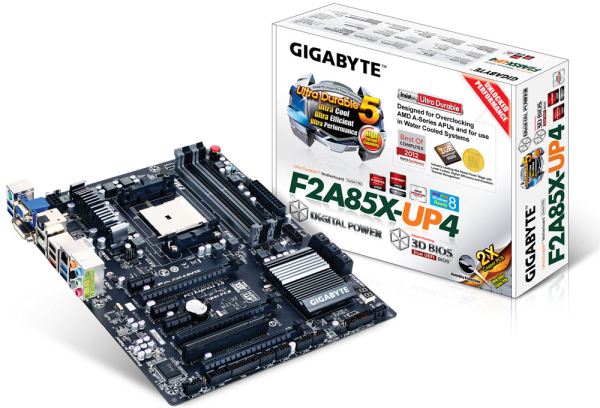

More...
-
12-14-12, 10:30 PM #2434
Anandtech: AMD's Radeon HD 7970M: Ivy Bridge vs. Trinity Video
In one of the most "interesting" moves I've seen in the mobile market, MSI has equipped their GX60 gaming notebook with an HD 7970M...paired with an AMD A10-4600M APU. Curious to see how the combination would stack up against the Intel i7-3720QM + HD 7970M combination used in AVADirect's Clevo P170EM, I ran some quick benchmarks and put together a video of Batman: Arkham City showing the systems running side by side. First, here's the video link:
Not surprisingly, the Ivy Bridge solution walks away from the Trinity laptop when we turn down the details a bit, but at maximum quality the two solutions appear relatively close. The issue is that while average frame rates may be close in some cases, minimum frame rates often tell the real story. There are points in the above video where Trinity falls to sub-30 FPS for a second or two at a time, which can be very noticeable in gameplay.
Anyway, I'm curious: are you interested in more videos like this? It takes a lot more time than a simple reporting of a benchmark number, but if there's enough demand for it I'll be happy to oblige. I should also note that there are some titles where the Trinity and Ivy Bridge notebooks are fairly close in performance (at maximum detail at least), while other titles are even more in favor of a faster CPU (e.g. Skyrim). Regardless, the full review of the MSI GX60 will be forthcoming.
Pricing for the GX60 is the one area where MSI looks to beat Intel HD 7970M offerings. The base model comes with a 750GB hard drive, 8GB RAM, A10-4600M, and of course the HD 7970M. Right now (if it's in stock), you can get that configuration for around $1200. Our particular unit takes yet another odd approach by including a 128GB RAID 0 SSD set for the OS and apps, which might sound appealing until you realize they're using SanDisk U100 drives (not exactly the fastest SSDs around); we're not sure what pricing is for this particular configuration. AVADirect's P170EM by contrast is priced at $1519, with a $100 off coupon available at the time of writing. That will get you an i7-3630QM and the 7970M, so for about $150 to $200 extra, for gaming purposes we recommend most users go that route.

More...
-
12-14-12, 11:30 PM #2435
Anandtech: Corsair Carbide 200R Case Review: How Low Can You Go
Corsair entered the enclosure business from the top with a measure of care to establish a solid brand identity. The Obsidian 800D was released as a flagship product and signalled that Corsair was serious about case design and not just looking for another revenue stream, and for the most part it was well received. Since then they've gradually trickled their designs down, with the Carbide series aimed at more frugal users. Yet the least expensive Carbide, the 300R, still runs $79 when most people would peg the price of a "budget" case as closer to $50 or $60. Enter the 200R.
The Carbide 200R is the ultimate trickling down of Corsair's case line. Coming in with an MSRP of $59 and available for just $49 as of this writing, the 200R is Corsair's shot at the extreme value consumer, but this is a very tricky market to address. The balancing act of features, performance, and price becomes substantially more difficult to manage, and Corsair has a reputation to maintain. Were they able to get the price down while keeping up with their standards for ease of use and solid performance, or did they have to sacrifice too much?

More...
-
12-16-12, 12:00 PM #2436
Anandtech: Samsung Acquires SSD Caching Company NVELO
This came out of the blue. Samsung announced their intent to acquire NVELO, known for their Dataplex SSD caching software. Price or specific timeframe of the acquisition have not been revealed yet, but the acquisition does include all NVELO technology and personnel.
NVELO as a company may be a new acquaintance for many as it was founded only two years ago as a spin-off from Denali Software, which was acquired by Cadence in June 2010. While NVELO has not been around for long, the company is full of experience as most of the employees worked over a decade for Denali before the acquisition. In fact, Dataplex development began in 2007 when Denali was still a standalone company.
There are several products in the market that use NVELO's Dataplex software such as OCZ's Synapse, Corsair's Accelerator and Crucial's Adrenaline SSDs. Dataplex is essentially an alternative to Intel's Smart Response Technology (SRT) but with fewer limitations. For example, Dataplex is not tied to any specific chipsets, making it a viable option for AMD based setups and older systems without Intel's SRT support. There is also no 64GB cache size limitation like in Intel's SRT, although most of the SSDs that are bundled with Dataplex are 64GB or smaller. Whether it's worth it to use an SSD bigger than 64GB for caching is a different question, but at least there is an option for that. We have played around with NVELO's Dataplex in our labs but we haven't thoroughly reviewed it (yet).
While at least I didn't expect this acquisition, it does make a lot of sense. SSD prices have come down significantly in the last few years but we still aren't at a point where SSDs can replace hard drives in mainstream products. However, the difference an SSD makes is just so substantial that there is no reason not to want an SSD. The advantage of caching is that you can have SSD-like performance with plenty of storage without breaking the bank. Samsung doesn't have any consumer-grade SSD caching products, so with the acquisition it seems that Samsung is interested in entering that market. Why Samsung chose to acquire NVELO instead of just licensing the Dataplex software is a good question, but it's possible that Samsung wants to develop something in the house instead of using a commercially available solution (given the significant vertical integration already present in their SSDs, this wouldn't be a surprise). The acquisition may also be a way to eliminate competition because Samsung can force the competitors to get out of the SSD caching market or to use another solution (assuming Samsung makes Dataplex proprietary). 

More...
-
12-17-12, 04:00 PM #2437
Anandtech: AMD Announces Their First 8000M GPUs
AMD held a press briefing today on their upcoming 8000M graphics chips, which they are calling the "second generation GCN architecture" parts. We’ll have more on that in a moment, but while we were expecting a rebranding prior to the call, it appears we are at least partially mistaken—you can see the previous generation high-end 7000M announcement from April 2012 for reference.
I’m not going to get too far into the marketing aspects, as we’ve heard all of this information before: AMD has improved Enduro Technology, they’re continuing to improve their drivers, and APP Acceleration has a few more applications. There have been a few major titles released in the past couple of months with AMD Gaming Evolved branding (Far Cry 3 is arguably the most notable of the offerings, with Hitman: Absolution and Sleeping Dogs also scoring well amongst critics and users), and Crysis 3 and Bioshock Infinite are two future releases that are certain to get some serious attention.
Cutting straight to the chase, at this point AMD has released limited information on the core specifications for some of their 8000M GPUs, but they coyly note that at least one more GPU announcement will be forthcoming in Q2 2013 (8900M by all appearances). Today is a soft launch of high level details, with more architectural information and product details scheduled for January 7, 2013 at CES. AMD did not share any codenames for the newly announced mobile GPUs, if you’re wondering, other than the overall family name of “Solar” for the mobile chips (replacing the outgoing “London” series). Here are the details we have right now:
Obviously there are a lot of missing pieces right now, but what we immediately notice is that the core count on the 8500M/8600M/8700M means that we’re definitely looking at a new GPU. The only other time we’ve seen AMD do 384 cores is with Trinity, but that’s a VLIW4 architecture so we’re not seeing that again. Given the currently shipping Southern Islands chips (“London” on the mobile side) have 640 cores max for Cape Verde, 1280 max for Pitcairn, and up to 2048 for Tahiti, AMD has likely created a fourth SI derivative that drops down to two CU arrays, each with three CUs. (You can read more about the GCN/SI architecture in our earlier GPU coverage.) Performance is something of a wildcard with the new 384 core parts, and the choice of DDR3/GDDR5 memory will also influence the final result. We'll find out in the coming months how the 8500/8600/8700M stack up to NVIDIA's midrange "GT" offerings, which interestingly are also using 384 cores.AMD Radeon HD 8500M, 8600M, 8700M, and 8800M   Radeon
HD 8500MRadeon
HD 8600MRadeon
HD 8700MRadeon
HD 8800MStream Processors 384 384 384 640 Engine Clock 650MHz 775MHz 650-850MHz 650-700MHz Memory Clock 2.0GHz/4.5GHz 2.0GHz/4.5GHz 2.0GHz/4.5GHz 4.5GHz Memory Type DDR3/GDDR5 DDR3/GDDR5 DDR3/GDDR5 GDDR5 FP32 GFLOPS 537 633 537-691 992 FP64 GFLOPS 33 39 33-42 62
The final announced card is the one where we appear to have more of a rebrand/optimization of a previous generation chip. 8800M has the same 640 core count as Cape Verde/7800M, only with modified clocks this time. The earlier 7800M chips could clock up as high as 800MHz, so maximum core clock is actually down a bit, but they only ran the memory at up to 1GHz (4GHz effective) GDDR5. If AMD determined memory bandwidth was more important for that particular GPU than shader performance, the new 8800M would make sense. Also note that AMD isn’t including the boost clock speeds into the above chart; under the right circumstances, all of the new chips can run at higher clocks than the reference clock.
AMD isn’t calling the 8800M a rebrand, but we’re looking at the same core counts as Cape Verde and the same 28nm process technology, so we wouldn’t expect a substantial change in performance. There’s also the above chip shot as a point of reference. If the 8800M is substantially different from Cape Verde then the above images provided in AMD’s slides must be incorrect, as the new and old chips look the same. Minor tweaks to power use, caching, or other elements notwithstanding, we’re probably dealing with a die respin at most. But, there’s nothing inherently wrong with rebranding—AMD and NVIDIA have both been doing it for some time now. Don’t expect every “upgraded” GPU to be better; a 7400M isn’t faster than a 6700M, and likewise we expect 7700M and 7800M to be faster options than the 384 core 8500M/8600M/8700M and competitive with 8800M. Here’s a quick recap of the same core specs as above for the current 7700M/7800M parts:
I’ll refrain from commenting too much more about performance of an unreleased part, but AMD indicated their 8870M should be substantially faster than NVIDIA’s current GT 650M GDDR5 (which isn’t too surprising considering clocks and core counts), and the 8770M should likewise be a healthy 20%+ bump in performance relative to the 7670M. I’d rather see comparisons with GTX 675MX and HD 7770M, respectively, but I suspect those wouldn’t be quite as impressive. Anyway, you can see both of AMD’s comparison charts in the complete slide deck gallery below. Availability of the new GPUs is slated for Q1 2013.AMD Radeon HD 8500M, 8600M, 8700M, and 8800M   Radeon
HD 7730MRadeon
HD 7750MRadeon
HD 7770MRadeon
HD 7850MRadeon
HD 7870MStream Processors 512 512 512 640 640 Engine Clock 575-675MHz 575MHz 675MHz 675MHz 800MHz Memory Clock 1.8GHz 4.0GHz 4.0GHz 4.0GHz 4.0GHz Memory Type DDR3 GDDR5 GDDR5 GDDR5 GDDR5 FP32 GFLOPS 589-691 589 691 864 1024 FP64 GFLOPS 36.8-43.2 36.8 43.2 54 64
Gallery: AMD Announces Their First 8000M GPUs






More...
-
12-17-12, 11:30 PM #2438
Anandtech: HP EliteBook 8570w Notebook Review: The Other Side of the Coin
We recently reviewed Dell's top of the line Precision M6700 mobile workstation and found that the overall design left something to be desired compared to HP's high end EliteBooks, but that the price was definitely right for the performance. The M6700 is likely to remain a good value for the enterprise sector (much as Dell's desktop workstations continue to be), and the 10-bit PremierColor display uses a similar LG panel to the ones HP employs in their DreamColor displays. Can we get something like that in a smaller form factor, though?
As it turns out, theoretically at least, we can. We have an HP EliteBook 8570w on hand for review, and the 15.6" 1080p DreamColor display threatens to hit the sweet spot for productivity, with a smaller chassis footprint than larger workstations like the M6700 and EliteBook 8760w/8770w. But is the 8570w able to hit the same value propositions as Dell's mobile workstations, can it offer similar performance, or is our memory of the HP EliteBook line a little rosier than reality?

More...
-
12-18-12, 11:00 PM #2439
Anandtech: Behind the Scenes of AnandTech's Server Tests [Video]
We've been quietly testing doing more video content on the site over the past year. I've done a few reviews over at our YouTube channel, and we also host all of our smartphone/tablet camera samples over there as well. Going into 2013 we'll be ramping up the amount of video content on the site to go along with Pipeline and the Podcast as some the new features we've introduced over the past couple of years. In doing so we're also going to be hosting videos locally.
When we were looking for the first content to trial our locally served video, I asked Johan de Gelas, the head of our IT/Enterprise testing at AnandTech if he could put something together. Johan came back with a behind the scenes look at the Sizing Servers Lab in Belgium, the back-end for all of our server reviews and testing. 
Johan's video is embedded below and if this goes well he's promised to bring us a look at ARM based servers on video in the not too distant future.

More...
-
12-19-12, 12:30 PM #2440
Anandtech: Corsair Neutron & Neutron GTX: All Capacities Tested
Corsair surprised us all at Computex this year when they announced their Neutron and Neutron GTX SSDs based on a so-far relatively unknown Link A Media Devices (LAMD) controller. While LAMD was new to the consumer-grade SSD controller market, the company had been making controllers for hard drives and enterprise SSDs for years, so the LM87800 found inside Neutron SSDs wasn't LAMD's first attempt in the storage world. The experience LAMD has gathered in the enterprise world is definitely visible in the LM8700 because even though its LAMD's first consumer-grade controller, it was not dwarfed by SandForce or Marvell.
We reviewed the Neutron in August when it was initially launched but Corsair only sampled reviewers with 240GB models. While 240/256GB is undoubtedly the most popular capacity at the moment, there is still a good market for 120/128GB SSDs and the market for 480/512GB SSDs is getting bigger all the time as prices come down. SSDs also perform differently depending on the capacity, NAND and controller, which means testing all capacities is necessary. Corsair sent us the remaining capacities of Neutron and Neutron GTX, so read on to find out how they perform!

More...
Thread Information
Users Browsing this Thread
There are currently 17 users browsing this thread. (0 members and 17 guests)




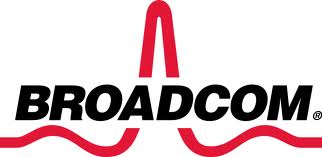

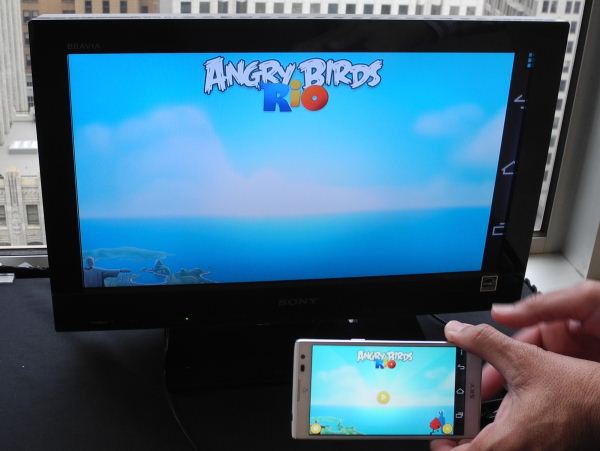

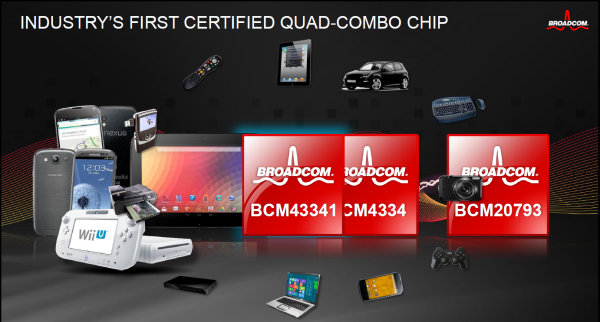



 Quote
Quote
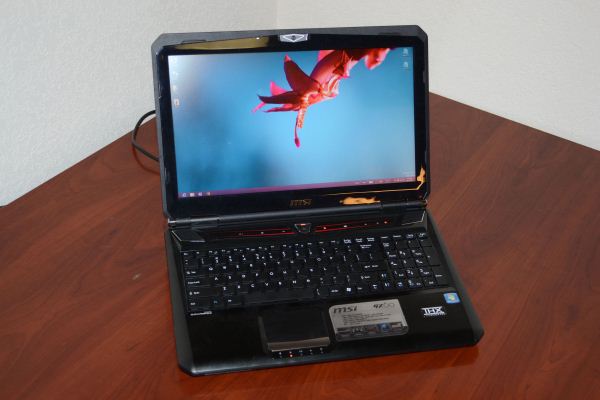
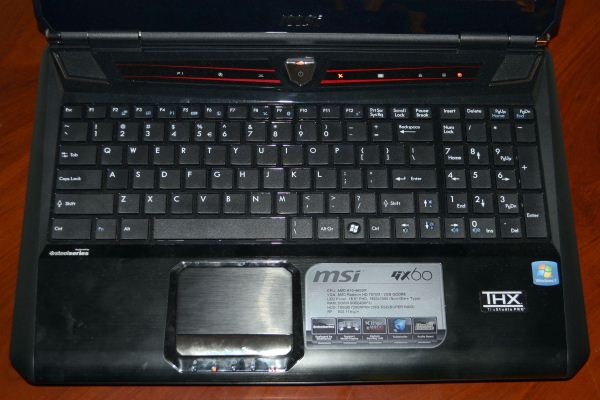
.jpg)

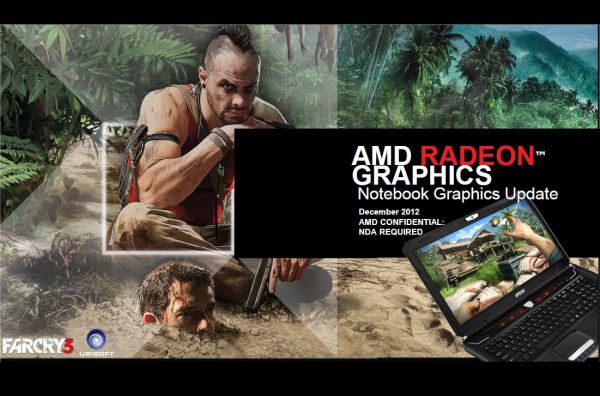

.jpg)

















Bookmarks